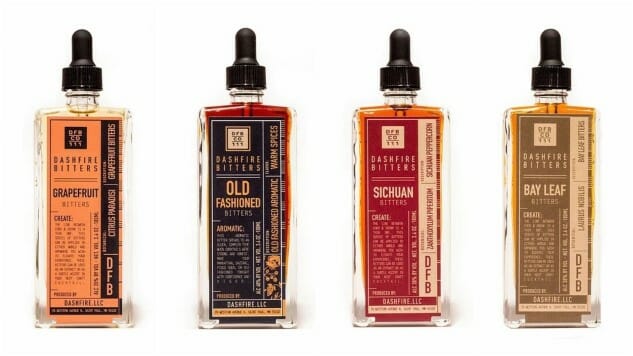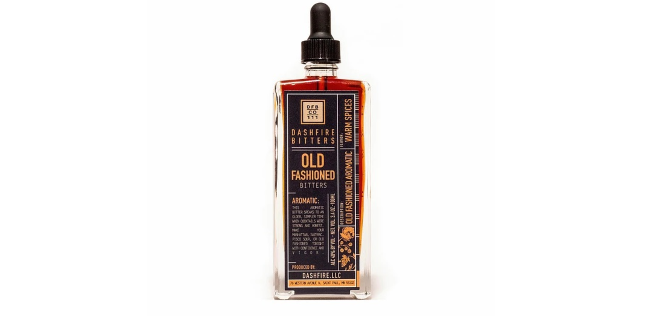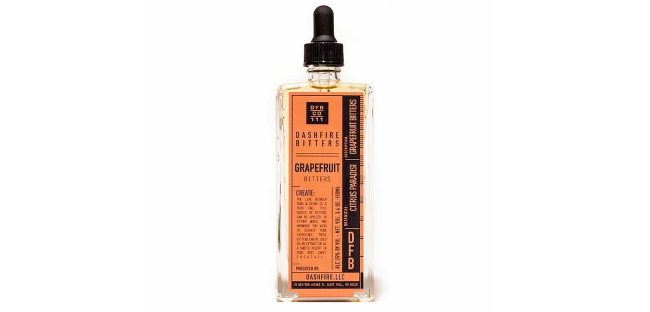Tasting 5 Unique Cocktail Bitters from Dashfire Bitters
Photos by Dashfire Bitters
There are few containers that represent such untapped potential and boundless exploration in the drink world as an unopened bottle of bitters. Whereas a bottle of a base spirits—say rye whiskey, or rum, or gin—often implies traveling in a certain classical direction of taste and experience, you really can’t make the same assumption of a bottle of bitters. The same product can be used as the core component of an otherwise neutral mixed drink, or as an ephemeral nuance flitting around the edges of perception in a powerful “up drink” cocktail. They can be mixed into N/A drinks as well, such as seltzers and sodas, or used to add flavor to baked goods, juices or dairy products. A bottle of bitters, in fact, just might be the most versatile thing in your home bar.
And yet, even cocktail enthusiasts have a tendency to overlook the sheer variety of bitters available today, instead falling back on those that are universally always around. News flash: There’s more out there in the bitters world than Angostura, Peychaud’s and generic orange bitters—much, much more. And not only are these unique bitters available all around us, but they represent perhaps the easiest way to take one’s cocktail game to the next level, in terms of crafting unique drinks. How else are you going to add those pleasant, unusual spice notes to your beverage? Not with a base spirit. But with a spritz of Sichuan bitters? A few drops can transform your drink.
As such, we’re always on the lookout for new varieties of bitters, and recently ran across Minnesota company Dashfire Bitters, which produces quite a dizzying array. By our count, they produce at least 21 different varieties, from the omnipresent orange bitters to intensely specific flavors like star anise, clove and even bay leaf. The company describes their production method thusly:
The production process is done slowly, with real raw ingredients. The spirit is proofed down to a lower ABV before adding the botanicals. This requires a longer maceration time, but also allows MORE botanicals to be added to each batch. This, in turn, brings out fuller, richer flavors that enter the solution slowly, which builds depth of flavor. The alcohol used for maceration is made from local organic Minnesota corn. Dashfire cools their macerations to protect aroma and preserve flavor during the proofing process. We’re sure that no other bitters brand takes such measures to improve their product.
The proof, of course, is in the flavors, so we requested an array of bitters to taste for ourselves. The company sent five of the attractive, decently sized (100 ml) bottles to Paste in a variety of flavors, so let’s conduct a tasting, shall we?
I tasted each of these bitters varieties in one of my own, personal favorite ways to consume bitters—in small glasses of hot water, which brings out a tea-like quality to whatever bitters you might be drinking. Also: They work wonders on upset stomachs, so give it a try the next time you have indigestion.
Dashfire Old Fashioned Aromatic Bitters

This bottle is obviously meant to evoke the classical “aromatic bitters” style, of which Angostura is by far the most famous example—a complex, all-purpose blend of warm spices that are suitable for a variety of different drinks. As I’ve found in the past, these are often quite pleasant in hot water all on their own, contributing a chai-like spice profile.
Dashfire Old Fashioned Aromatic bitters hit with a big spice punch on the nose, highlighting clove and orange peel. I mentioned chai earlier, but what this really reminds me of is Bigelow’s classic Constant Comment tea in its combination of citrus and warm spices. Big orange notes are present on the palate, with some sweet cinnamon. “Warming” is the word, as everything about this particular flavor seems comfortably familiar, like a distilled hot toddy. These aren’t particularly exotic, but they’re quite pleasant.
Dashfire Grapefruit Bitters

On the nose, the most impressive thing about the grapefruit bitters is how unmistakably and genuinely “grapefruit” they are in their citrus quality—you would not mistake it for lemon or orange at all. Distinctive citrus impressions remind me of the ruby red grapefruit seltzer I’m fond of drinking as an alcohol replacement.
On the palate, this variety is a little bit more genuinely bitter than the Old Fashioned Aromatic bitters, but also retain some sweetness, a hint of warming spice and a slightly briny/saline quality. They’re uncomplicated and not very complex, but this style of bitter really isn’t meant to be—it’s just supposed to encapsulate everything “grapefruit,” and it does that really well. Of all the flavors, this is the easiest to immediately grasp and wrap one’s head around.
-

-

-

-

-

-

-

-

-

-

-

-

-

-

-

-

-

-

-

-

-

-

-

-

-

-

-

-

-

-

-

-

-

-

-

-

-

-

-

-











































